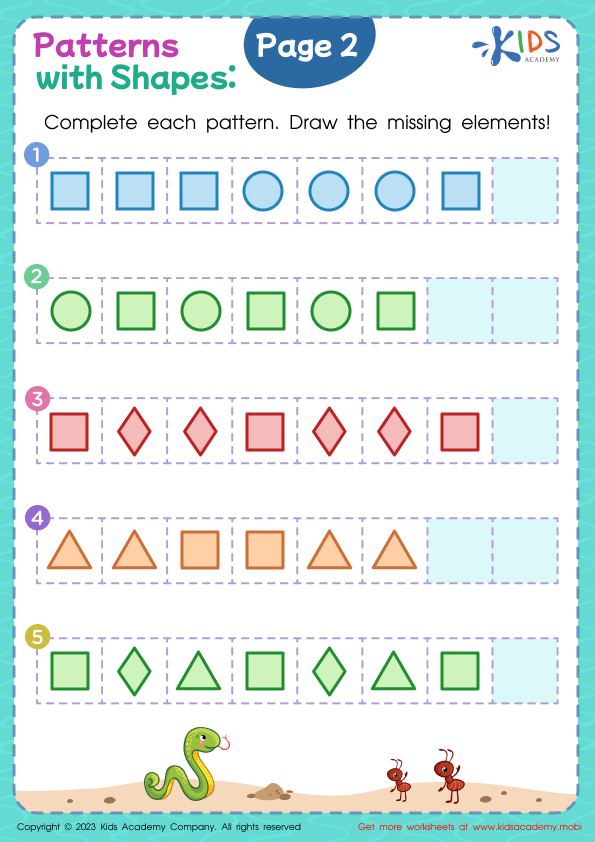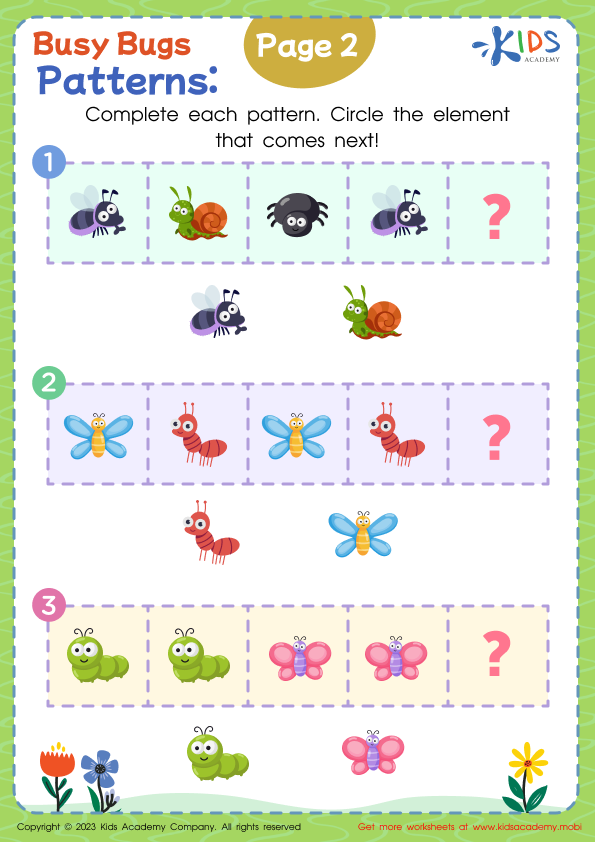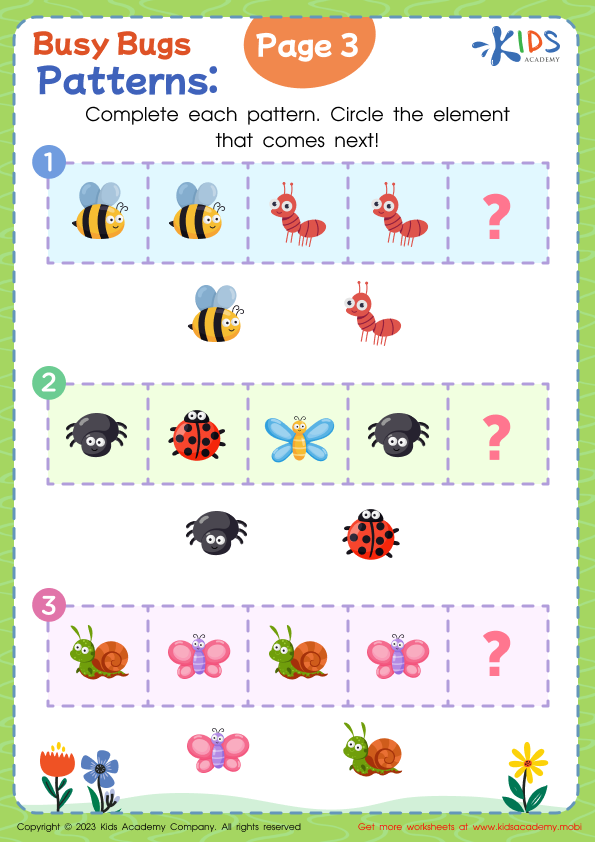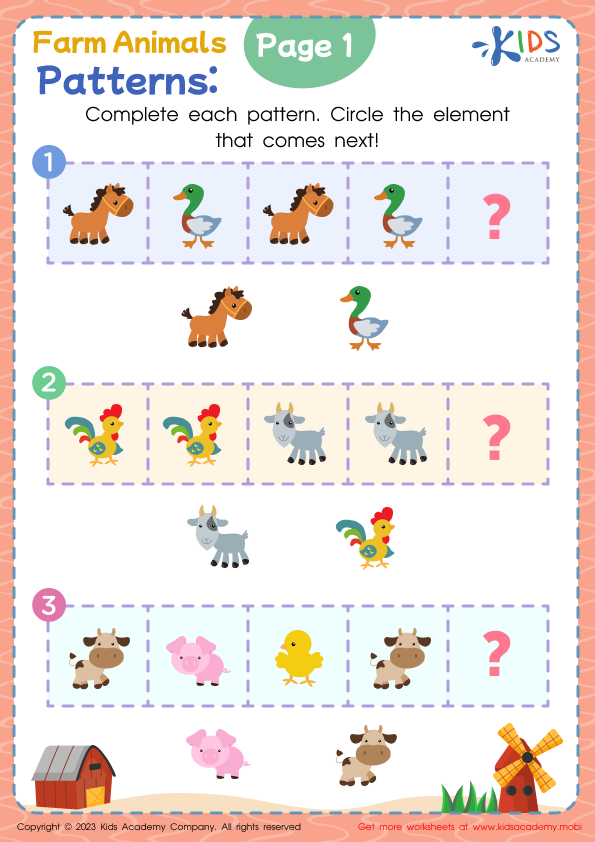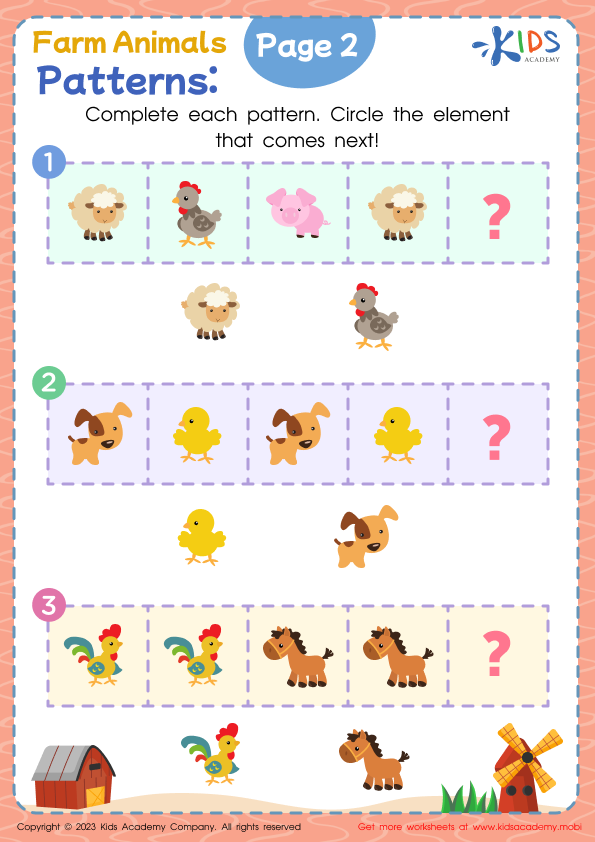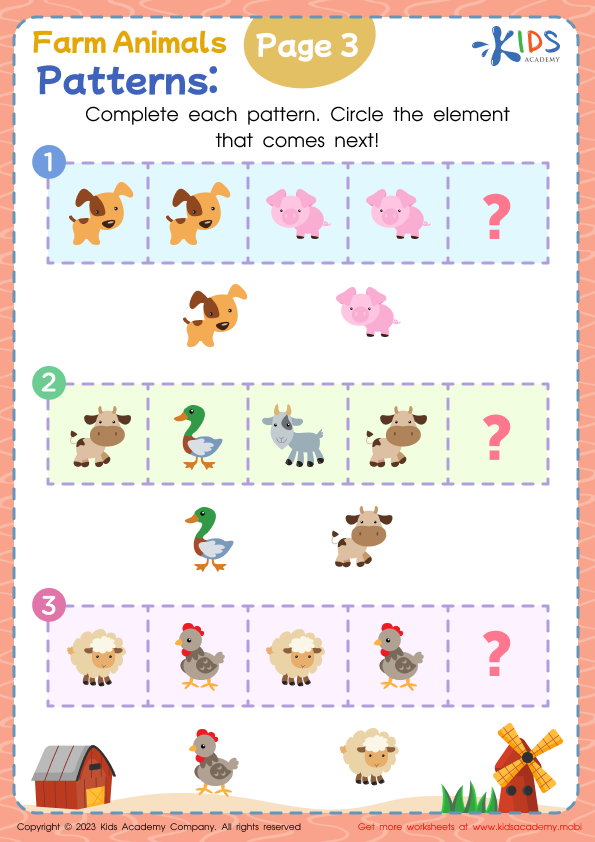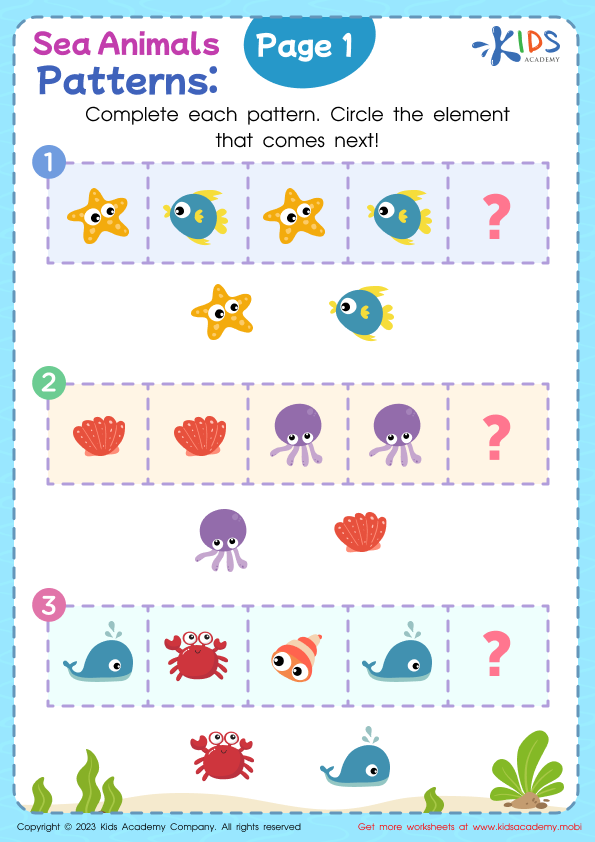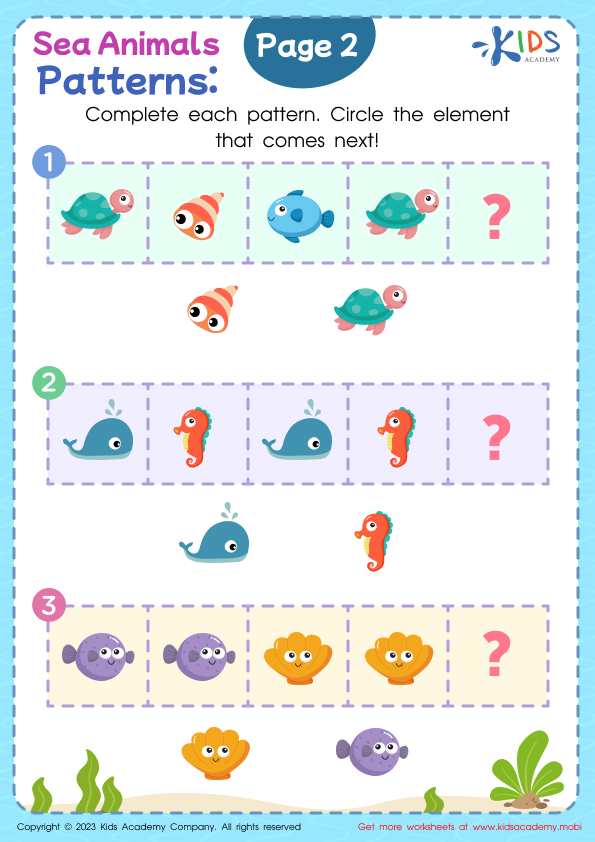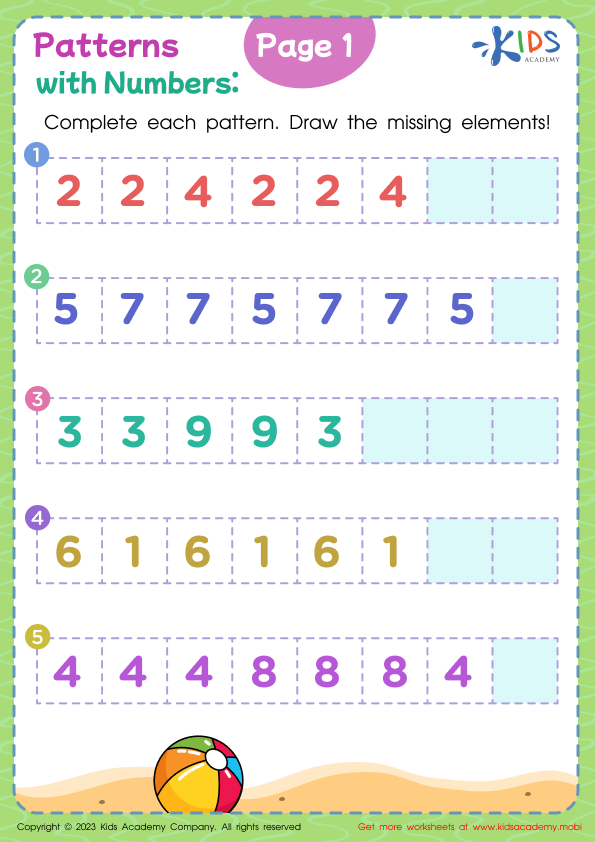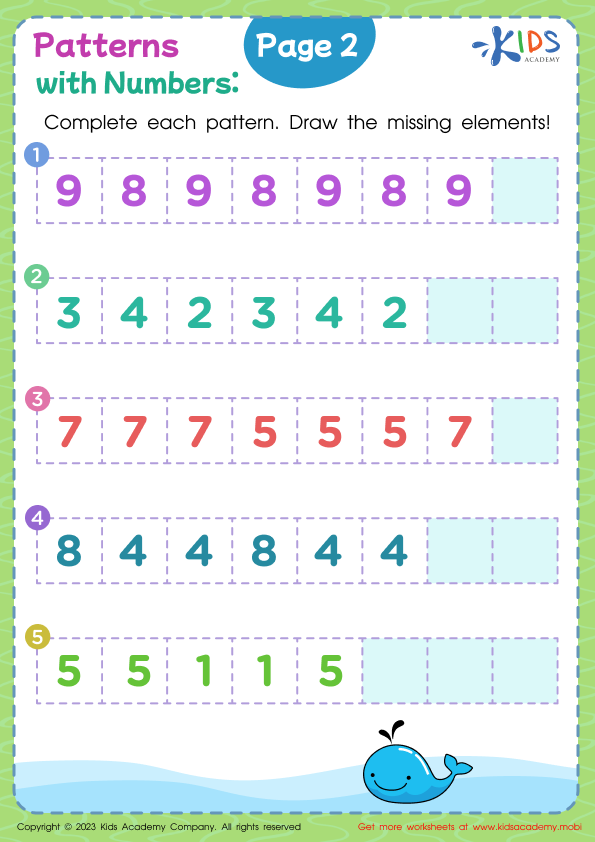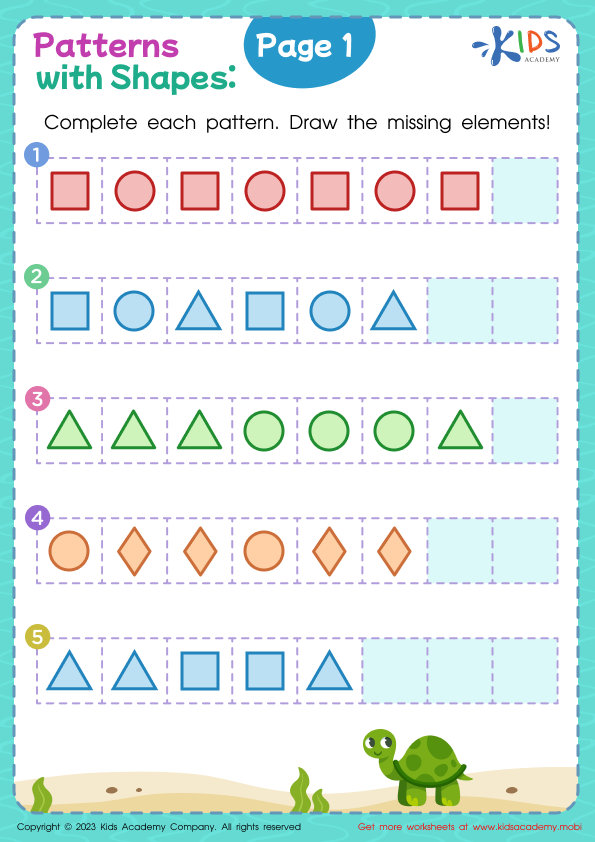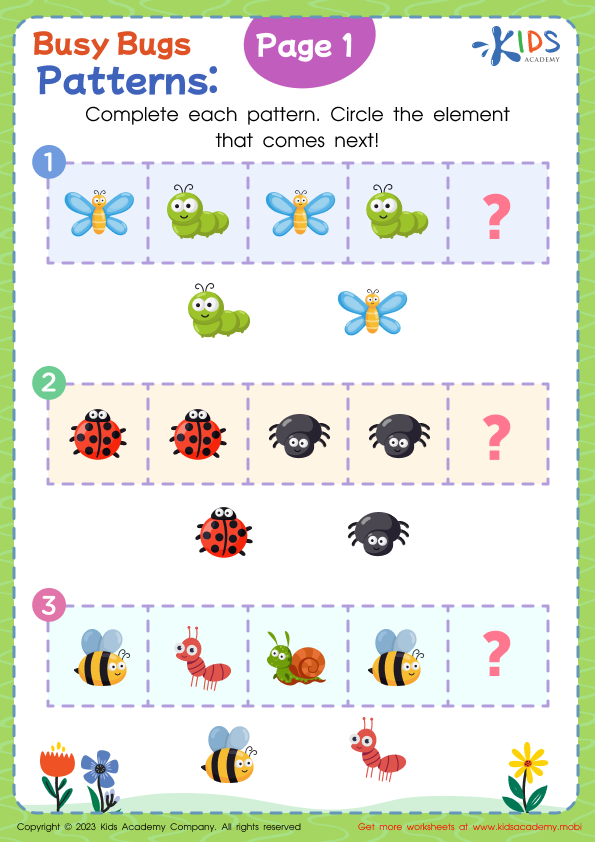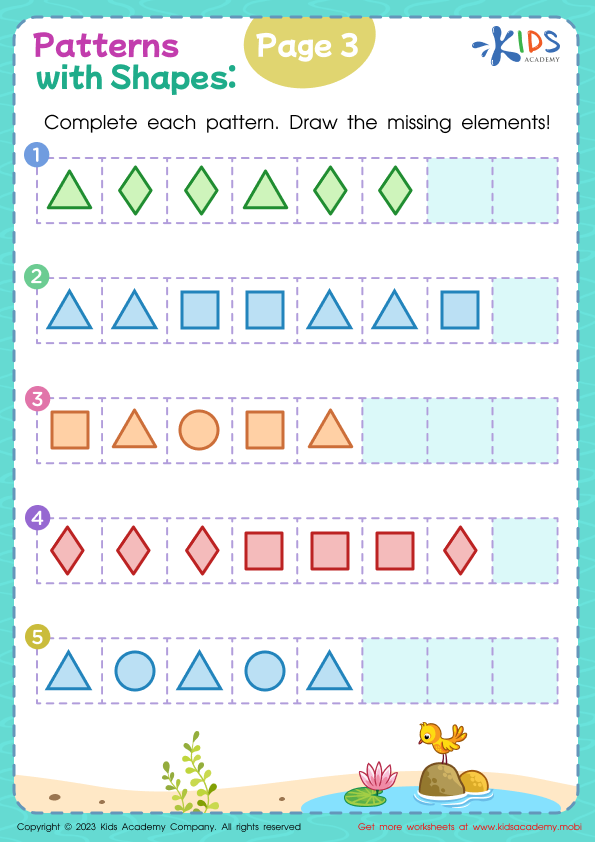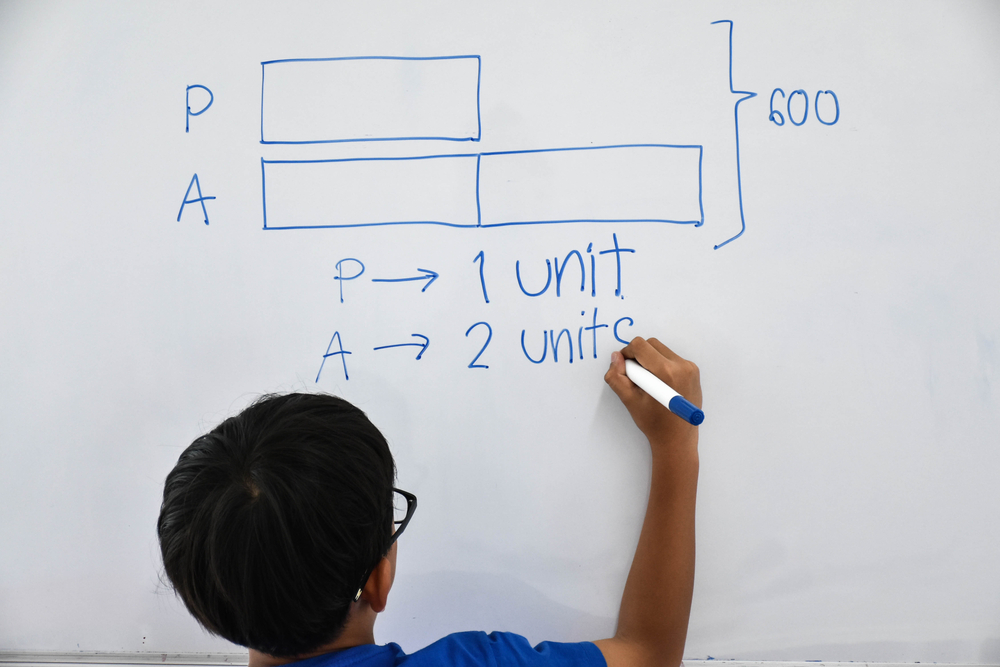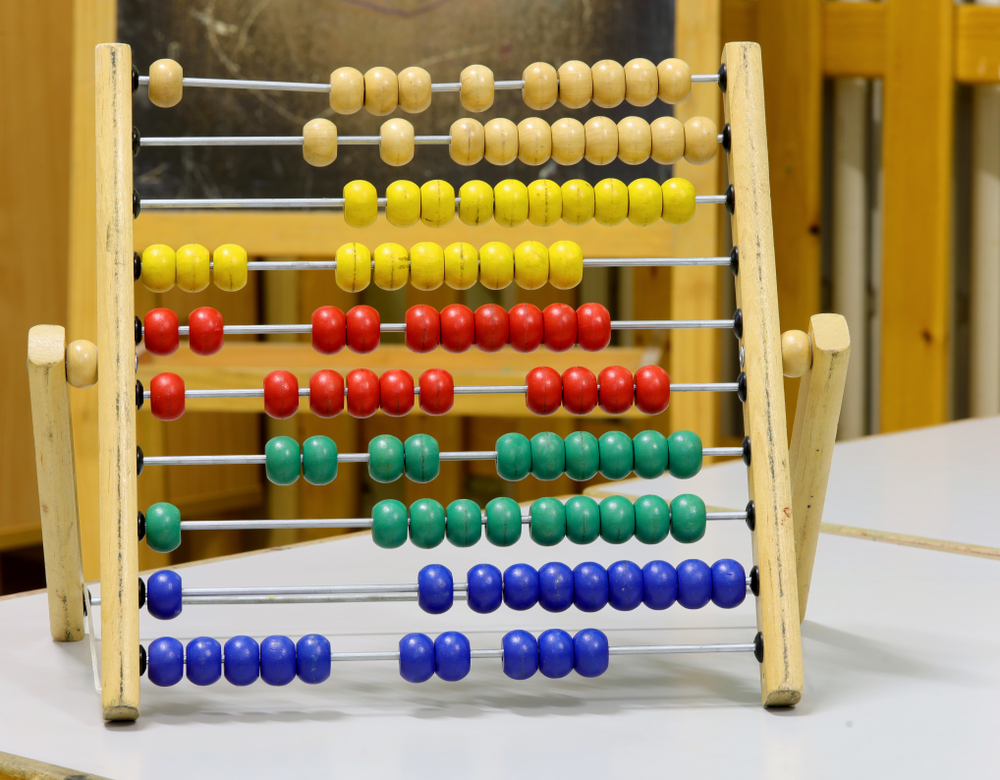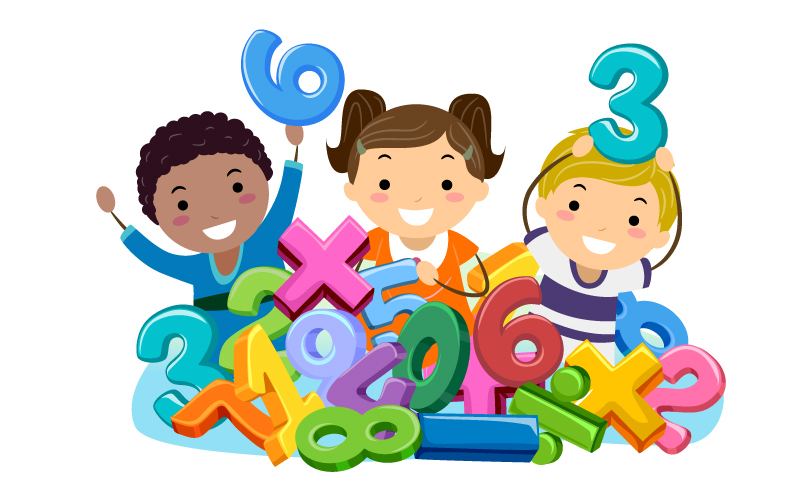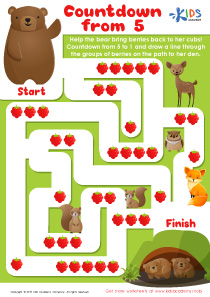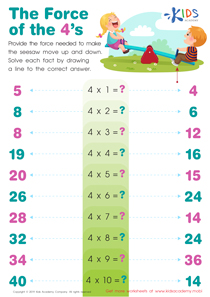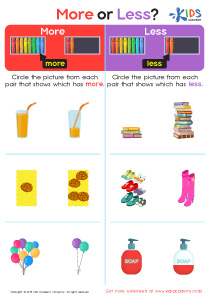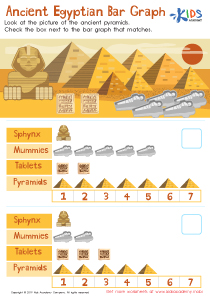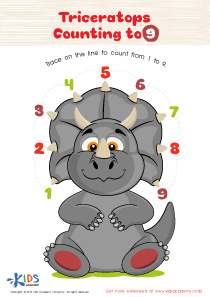Easy Patterns Worksheets for Ages 4-8
15 filtered results
-
From - To
Welcome to our Easy Patterns Worksheets for Ages 4-8! These engaging worksheets are designed to ignite your child’s love for learning while enhancing their understanding of patterns. Children will enjoy sorting, completing, and creating patterns through fun and interactive activities. Each worksheet is strategically crafted to boost cognitive development, improve fine motor skills, and foster problem-solving abilities. Perfect for homeschooling, classroom use, or extra practice at home, our worksheets cater to various learning styles. Explore printable resources that make mastering patterns enjoyable and rewarding. Watch your child grow with confidence as they explore the colorful world of patterns today!
Easy Patterns for Ages 4-8 play a crucial role in the early development of children’s cognitive and motor skills. Engaging with patterns helps young learners understand relationships between objects, shapes, and numbers, fostering critical thinking and problem-solving skills. These activities not only enhance logical reasoning but also lay the groundwork for more complex concepts in mathematics and science.
Patterns are everywhere in our environment, and when children engage with them, they start to recognize and appreciate the order in chaos. This foundational skill enhances their ability to predict outcomes, an essential aspect of learning. Moreover, working with patterns boosts creativity while also promoting fine motor skills through hands-on activities such as drawing or crafting.
Parents and teachers should recognize that introducing Easy Patterns is not just about making learning fun—it encourages persistence in overcoming challenges, as children work towards completing pattern sequences. By incorporating pattern recognition into daily learning experiences, adults can effectively support children’s intellectual growth, promote a love for learning, and build a strong foundation for future academic success. Igniting this curiosity and understanding at such a young age will help instill confidence and competence in mathematics and other disciplines later in their educational journey.

